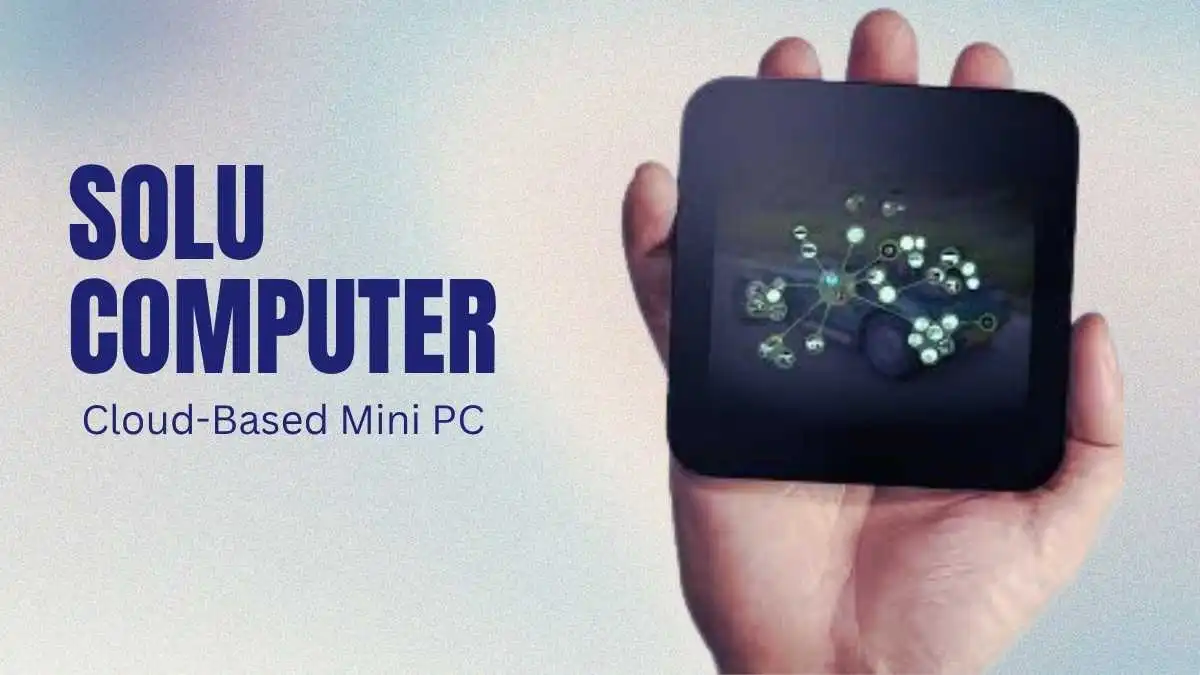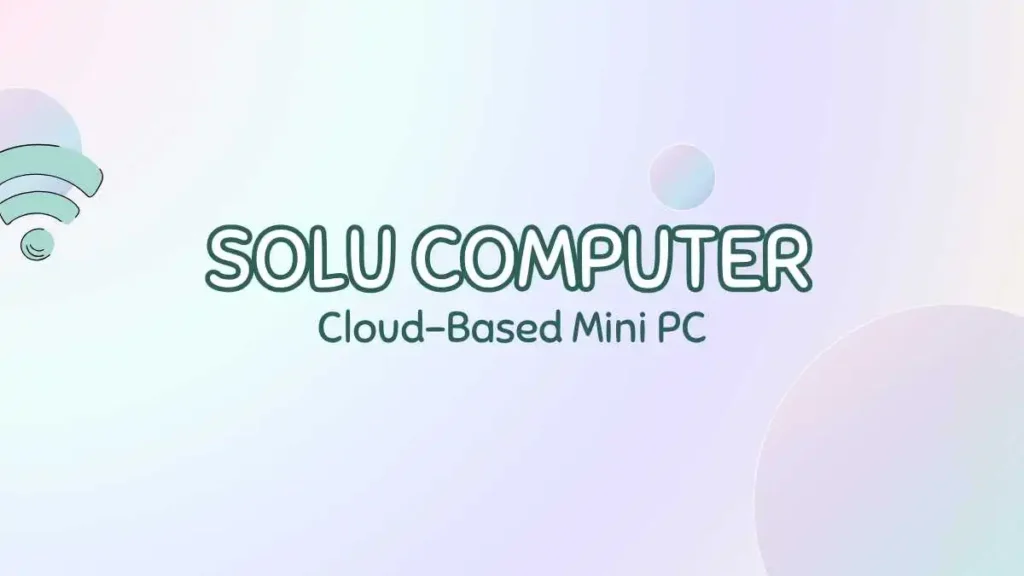Tech
Solu Computer Review: Cloud-Based Mini PC

The Solu Computer, introduced by Finnish startup Solu Machines in 2015, was a groundbreaking attempt to revolutionize personal computing. Pocket-sized and elegantly designed, it combined stylish hardware with an innovative, cloud-based operating system. Solu aimed to replace traditional file systems with a unique project-based interface, emphasizing collaboration, automatic cloud syncing, and a subscription-based software model.
Equipped with a 2.3 GHz processor, 4 GB of RAM, and 32 GB of local cache, Solu offered a portable yet powerful alternative to conventional computers. Despite initial excitement and crowdfunding success, the device struggled to gain mainstream adoption and ultimately faded from the market.
Table of Contents
The Vision Behind Solu Computer
Solu Computer was not merely a piece of hardware; it was a conceptual reimagining of computing. The startup behind it, Solu Machines, set out to challenge long-standing conventions by developing a device that merged the power of cloud computing with the elegance of minimalistic design. CEO and co-founder Kristoffer Lawson, known for his earlier role in co-founding the international money transfer service Holvi, envisioned Solu as “the most beautiful computer ever made” and a “cloud-linked operating system that’s social by design.”
Rather than relying on the traditional metaphor of folders and files, Solu introduced project-based navigation. Users would organize their work in a series of visual “bubbles,” representing various projects and tasks, all automatically synced to the cloud. The intention was to streamline collaboration, eliminate data loss, and free users from the burden of manual file management.
Legacy and Lessons Learned
Although Solu Computer ultimately failed in the mainstream market, it left behind several important contributions and lessons for the tech industry:
- Interface Innovation: Solu’s project-based navigation predated similar movements in productivity tools such as Notion, Coda, and Airtable. These platforms also aim to dissolve the boundaries between apps and content.
- Cloud-First Design: Solu Computer was a pioneer in cloud-centric design. Today, services like Google Drive, Dropbox Paper, and Microsoft 365 have normalized the cloud as the default workspace.
- Subscription Model: What was once controversial is now common. Major tech companies, including Microsoft, Adobe, and Apple, now rely heavily on subscription revenues.
- Design Thinking: The Solu device emphasized aesthetic quality and human-centric design. Its tactile wooden shell, intuitive UI, and minimalist hardware are echoed today in luxury tech and eco-conscious gadgetry.

Design and Hardware: Small Yet Striking
Solu Computer was a colorful object in a maze of grey slabs. It had a wooden case made of a single piece of Finnish birch and was accompanied by a high-resolution touchscreen interface. It was done with warmth and craftsmanship, something that does not usually go with tech products. The device was pocket-sized, that is, measuring about 10×10 cm, thus very portable.
The Solu Computer had a quad-core processor, with 2.3 GHz and 4 GB of RAM pc, with a 32 GB local cache storage space. The internal cache served as a temporary offline repository so users could work on projects without real real-time internet connection. Reconnection would automatically synchronize with the cloud any changes that occurred.
The Subscription-Based Software Model
One of the most controversial and pioneering aspects of Solu Computer was its subscription-based software model. Rather than purchasing software licenses, users paid a monthly fee to access a suite of productivity tools and applications via the cloud. This SaaS-style model was integrated into the core pricing of the device.
The subscription model included not only system updates and cloud storage but also access to apps developed specifically for Solu OS. This was a sharp departure from the traditional app store model or outright software ownership.
While this model reflected a growing industry trend (seen in services like Microsoft 365 or Adobe Creative Cloud), applying it to an entire operating system and all associated software was met with mixed reactions. Some applauded the simplicity and forward-thinking approach, while others were skeptical of ongoing costs and dependency on a proprietary ecosystem.
Crowdfunding Success and Early Fervor
At the end of 2015, during the sales of Solu Computer on Kickstarter, it gained the coverage of tech media and early adopters. The fundraising campaign exceeded its target of 200,000 Euros and received more than quarter-a-million of that figure through thousands of supporters in many parts of the world. Critics complimented its bold interface, minimal design, and totalistic outlook.
The notion that crowdfunding was successful allowed the company to launch successfully, as well as confirming the interest of the masses in alternatives to leading operating systems. Solu Computer further developed and produced new software, shipping units to those who funded its projects. The hype about Solu was an indication that people have not forgotten the taste of innovation, much less the one provided by a small European company.
Challenges and Roadblocks
- Limited App Ecosystem: Solu OS lacked third-party developer support, resulting in a minimal and restrictive application library.
- Overreliance on Cloud Connectivity: The device’s functionality heavily depended on stable internet access, limiting usability in offline or low-bandwidth environments.
- Unconventional User Interface: The zoomable, project-based interface was unfamiliar to most users, creating a steep learning curve and usability issues.
- Hardware Limitations: Despite its sleek design, Solu Computer offered limited local storage, few ports, and quickly outdated specs, reducing its practicality.
- Subscription-Based Model Resistance: Many users were reluctant to adopt a computer that required monthly fees for core functionality and software access.

Conclusion
Solu Computer was an amazing bid at reinventing what a computer might be. It came with radical concepts: a compact, pocket-sized gadget; a project-oriented interface with no files or folders; and a highly cloud-integrated operating system, combined with a subscription-based design. Such characteristics made Solu Computer years ahead of most competitors in conceptual thinking.
-

 GENERAL5 months ago
GENERAL5 months agoChristofle – For Those Who Dream of Family Heirloom Silver
-

 SPORTS7 months ago
SPORTS7 months agoDiscover the World of Football with Streameast: Watch Your Favorite Leagues and Tournaments
-

 GENERAL4 months ago
GENERAL4 months agoUncovering the World of кинокрадко: The Dark Side of Film Piracy
-

 GENERAL2 months ago
GENERAL2 months agoATFBooru: Anime, Gaming, and Subculture Imageboard























